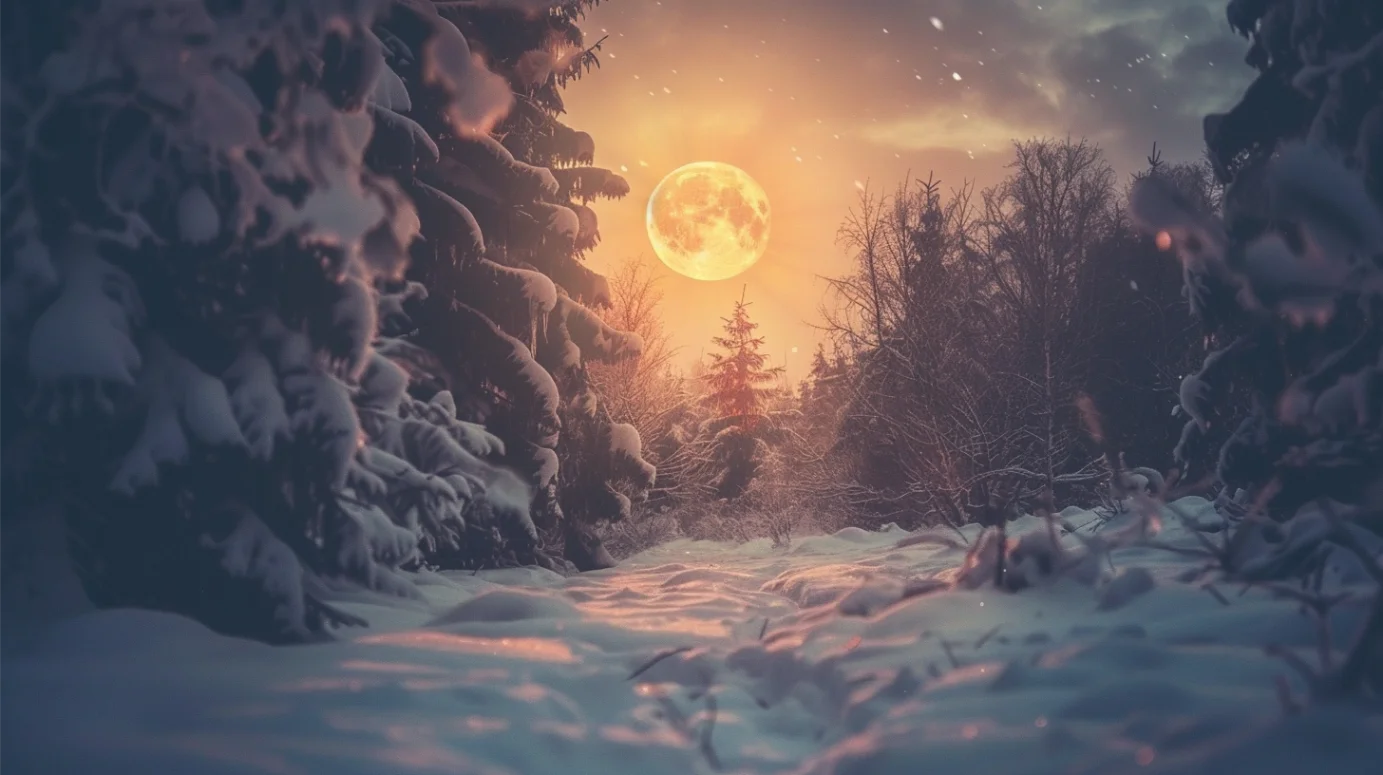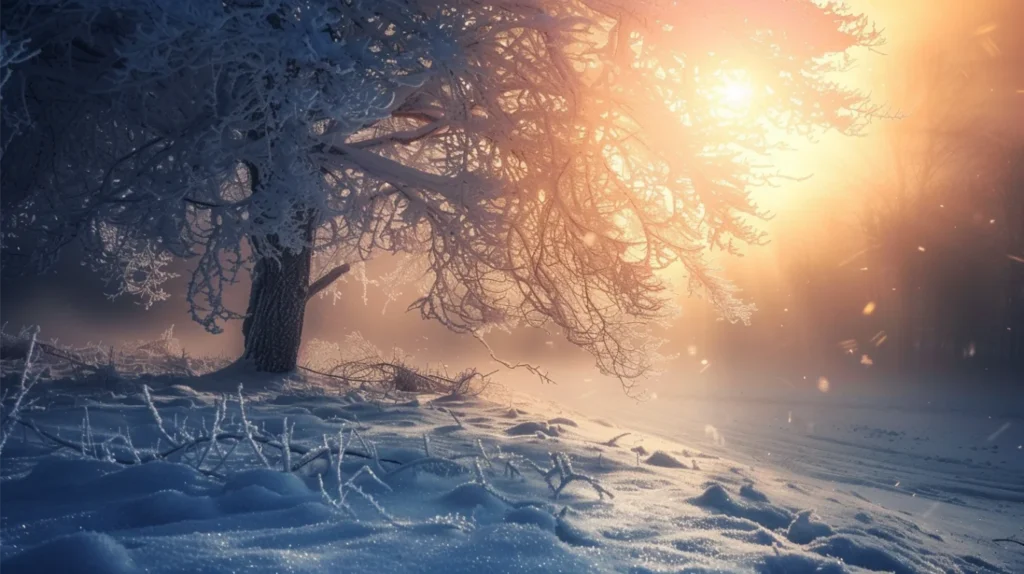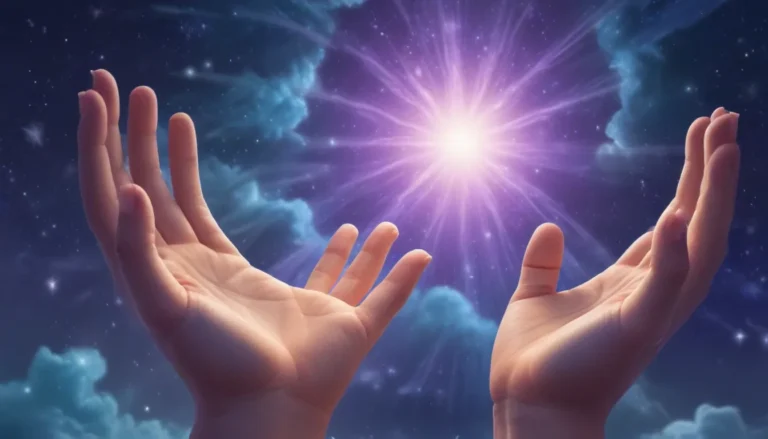
The winter solstice, a celestial event that marks the shortest day and longest night of the year, holds profound spiritual significance across cultures worldwide. This annual occurrence, typically falling between December 20th and 23rd in the Northern Hemisphere, has been celebrated for millennia as a time of renewal, rebirth, and deep introspection. In this comprehensive guide, we’ll explore the rich spiritual meaning of the winter solstice and how you can incorporate its wisdom into your own life.
Understanding the Winter Solstice
Before we dive into the spiritual aspects, let’s briefly explain what the winter solstice actually is:
The winter solstice occurs when one of Earth’s poles has its maximum tilt away from the Sun. This astronomical event results in the shortest day and longest night of the year in one hemisphere (the Northern Hemisphere in December, the Southern Hemisphere in June). It marks the official beginning of winter in the Northern Hemisphere and summer in the Southern Hemisphere.
Now that we’ve covered the basics, let’s explore the spiritual significance of this powerful time.
The Spiritual Significance of the Winter Solstice

1. A Time of Rebirth and Renewal
Across many spiritual traditions, the winter solstice symbolizes a time of rebirth and renewal. As the longest night gives way to gradually lengthening days, it represents the cyclical nature of life and the promise of new beginnings.
In Practice: Use this time to reflect on areas of your life that need renewal. What aspects of yourself or your life would you like to revitalize in the coming year? Consider journaling about these reflections or creating a vision board to visualize your renewed self.
2. The Triumph of Light Over Darkness
The winter solstice marks the point where darkness begins to recede, and light starts to return. This natural phenomenon has been interpreted spiritually as the triumph of light over darkness, good over evil, or knowledge over ignorance.
In Practice: Meditate on the areas of your life where you’d like to see more “light.” This could be in the form of clarity, positivity, or spiritual enlightenment. Light a candle as a symbolic gesture of inviting more light into your life.
3. A Period of Introspection and Reflection
The long, dark nights of winter naturally lend themselves to introspection. Many spiritual traditions view the winter solstice as an ideal time for deep reflection and inner work.
In Practice: Set aside some quiet time for meditation or contemplation. Review the past year, acknowledging both your challenges and achievements. What lessons have you learned? What patterns would you like to change?
4. Honoring the Cycles of Nature
The winter solstice reminds us of our connection to the natural world and its cycles. It’s a time to honor the rhythms of nature and our place within them.
In Practice: Spend some time in nature, even if it’s just a short walk in a local park. Observe the changes winter brings and reflect on how these natural cycles mirror cycles in your own life.
5. A Time for Stillness and Rest
In many spiritual traditions, the winter solstice is seen as a time for stillness and rest before the renewal of spring. It’s a reminder of the importance of downtime and self-care in our spiritual journey.
In Practice: Create a cozy, restful environment in your home. Practice restorative yoga or take a relaxing bath. Allow yourself to slow down and embrace the quiet energy of the season.
Spiritual Meaning of the Winter Solstice Across Cultures

The spiritual significance of the winter solstice transcends cultural boundaries. Let’s explore how different traditions around the world have interpreted and celebrated this powerful time:
Indo-European Traditions
In ancient Indo-European cultures, including the Celts, Druids, Norse, and Germans, the winter solstice held great spiritual significance. These societies often viewed it as a time when the veil between the physical and spiritual worlds was at its thinnest.
- Celtic Tradition: The Celts celebrated a festival called Alban Arthan (Light of Arthur) during the winter solstice. They believed this was when the Oak King (representing the waxing year) overcame the Holly King (representing the waning year).
- Norse Tradition: The Norse people celebrated Yule, a 12-day festival honoring the god Odin. They believed Odin led the Wild Hunt across the sky during this time, bringing blessings to some and doom to others.
Modern Practice: You could incorporate elements of these traditions by decorating your home with evergreen boughs (symbolizing eternal life) or lighting a Yule log.
Ancient Egyptian Tradition
The ancient Egyptians had a profound connection to the winter solstice, linking it to the cycle of death and rebirth embodied by their god Osiris.
- During the winter solstice, the Egyptians celebrated the rebirth of Osiris, believing that his power to bring new life to the land was strongest at this time.
- They decorated their homes with green palm rushes, symbolizing the triumph of life over death.
Modern Practice: Create an altar with green plants and objects that represent renewal to you. Meditate on the concept of rebirth and new beginnings.
Chinese Culture: Dongzhi Festival
In China, the winter solstice is celebrated during the Dongzhi festival, a tradition that dates back over 2,000 years.
- Dongzhi, meaning “the extreme of winter,” is a time for family gatherings and ancestor worship.
- People traditionally eat tangyuan, sweet rice balls that symbolize reunion and harmony.
Modern Practice: Gather with loved ones for a special meal. You could make or buy tangyuan, or create your own tradition of eating a special food that represents harmony to you.
Hinduism and Jainism: Makar Sankranti
In Hinduism and Jainism, the winter solstice is associated with Makar Sankranti, a festival celebrating the Sun’s northward journey.
- This festival marks the end of the inauspicious month of Pausha and the beginning of the holy month of Magha.
- It’s celebrated with ritual bathing, offerings to the Sun god, and flying colorful kites.
Modern Practice: Take a purifying bath or shower, visualizing negative energies being washed away. If weather permits, fly a kite as a symbol of reaching towards higher spiritual realms.
Native American Traditions
Many Native American tribes have rich traditions surrounding the winter solstice, often viewing it as a time for purification and renewal.
- The Zuni people of New Mexico celebrate Shalako, a days-long ceremony of purification and blessing for the coming year.
- The Hopi of Arizona perform the Soyal ceremony, which aims to bring the Sun back from its winter slumber.
Modern Practice: Create a personal purification ritual. This could involve smudging with sage, taking a cleansing bath with epsom salts, or simply sitting in meditation and visualizing yourself being cleansed of the old year’s energies.
Spiritual Practices for the Winter Solstice
Now that we’ve explored the rich spiritual heritage of the winter solstice across cultures, let’s look at some practices you can incorporate into your own spiritual routine during this powerful time:
1. Create a Winter Solstice Altar
Setting up an altar can help focus your intentions and create a sacred space for reflection.
How to do it:
- Choose a quiet corner of your home.
- Cover a small table or shelf with a cloth in winter colors (white, blue, silver).
- Add candles to represent the return of light.
- Include natural elements like pine cones, holly, or crystals.
- Add personal objects that represent what you want to manifest in the coming year.
2. Practice a Solstice Meditation
Meditation can help you tap into the introspective energy of the solstice.
How to do it:
- Find a quiet place to sit comfortably.
- Light a candle to represent the returning light.
- Close your eyes and take deep breaths.
- Visualize yourself in a winter landscape, surrounded by peaceful darkness.
- Imagine a small light growing within you, gradually expanding to fill your entire being.
- Reflect on what you want to release from the past year and what you want to cultivate in the coming year.
3. Perform a Release Ritual
The solstice is an excellent time to let go of what no longer serves you.
How to do it:
- Write down on small pieces of paper things you want to release (negative habits, limiting beliefs, etc.).
- Light a fire safely (in a fireplace, fire pit, or even a small candle in a fireproof dish).
- Mindfully burn each piece of paper, visualizing yourself letting go of these things.
- As the smoke rises, imagine it carrying away these aspects of your life.
4. Host a Solstice Gathering
Celebrating with others can amplify the energy of the solstice.
How to do it:
- Invite friends or family for a special dinner on the solstice evening.
- Share a meal of seasonal foods.
- Light candles and share your intentions for the coming year.
- Consider staying up all night to “keep vigil” for the sun, as many ancient cultures did.
5. Practice Gratitude
The darkest time of the year is a powerful moment to cultivate gratitude for the blessings in our lives.
How to do it:
- Start a gratitude journal, writing down three things you’re thankful for each day.
- Share your gratitude with others, perhaps during your solstice gathering.
- Create a gratitude tree: write what you’re grateful for on paper leaves and hang them on a small tree or branch.
6. Connect with Nature
Despite the cold, connecting with nature during the solstice can be a profound spiritual experience.
How to do it:
- Take a mindful walk in nature, observing the winter landscape.
- If possible, watch the sunset on the solstice evening and the sunrise the next morning.
- Bring natural elements into your home, like pine branches or holly, to feel connected to the season.
Incorporating Winter Solstice Wisdom Year-Round
While the winter solstice is a powerful time for spiritual practice, its wisdom can guide us throughout the year. Here are some ways to carry the spirit of the solstice with you:
Conclusion: Embracing the Spiritual Meaning of the Winter Solstice
The winter solstice, with its profound symbolism of light emerging from darkness, offers us a powerful opportunity for spiritual growth and renewal. Whether you follow a specific spiritual tradition or simply feel drawn to the energy of this celestial event, the solstice invites us all to pause, reflect, and set intentions for the cycle ahead.
By understanding and embracing the spiritual meaning of the winter solstice, we can tap into an ancient wisdom that transcends cultural boundaries. We’re reminded of our connection to the natural world, the importance of cycles in our lives, and the eternal dance of light and dark, both in nature and within ourselves.
As you celebrate this winter solstice, remember that you’re participating in a tradition that has brought meaning and inspiration to humanity for thousands of years. Whether through quiet reflection, joyous celebration, or mindful ritual, allow the energy of the solstice to guide you towards greater self-understanding and spiritual growth.
May the returning light of the solstice illuminate your path forward, bringing renewal, inspiration, and hope for the cycle to come.





